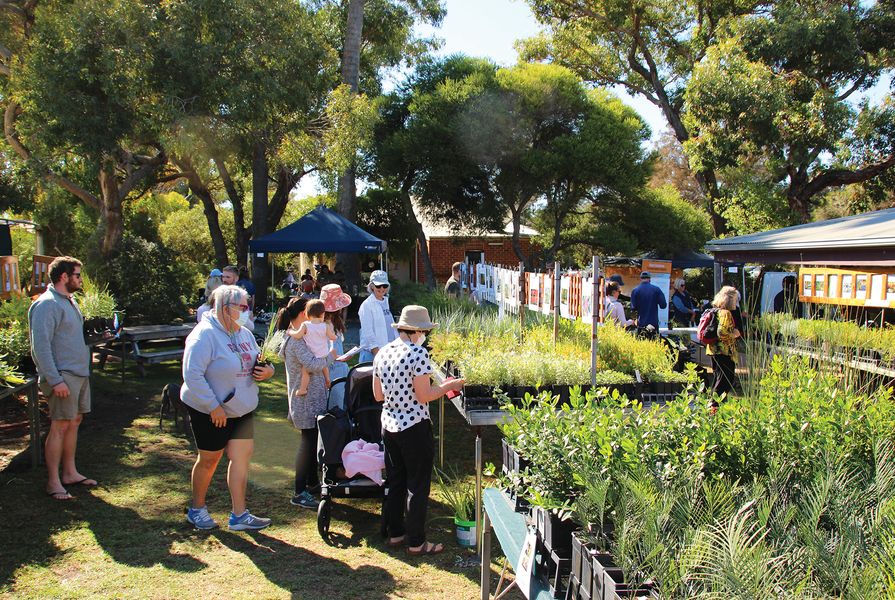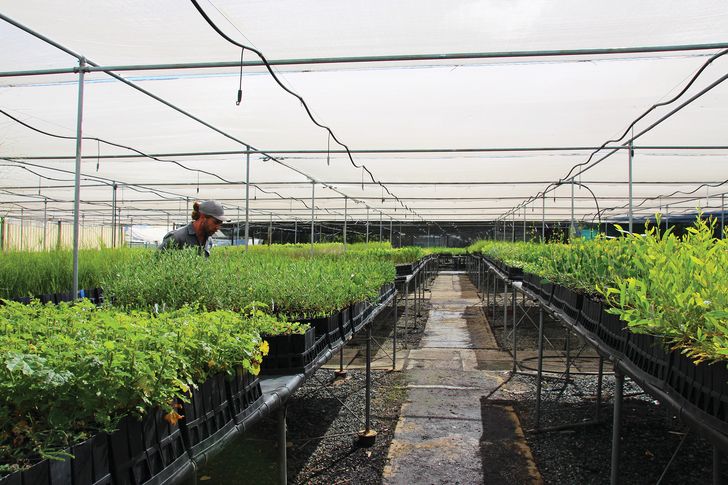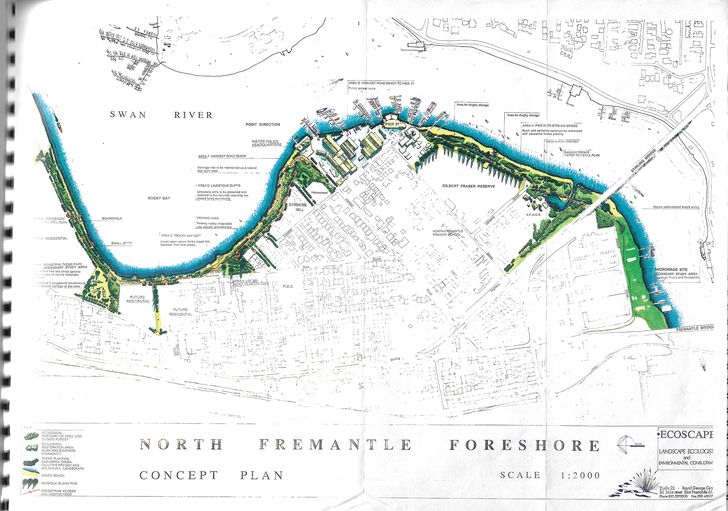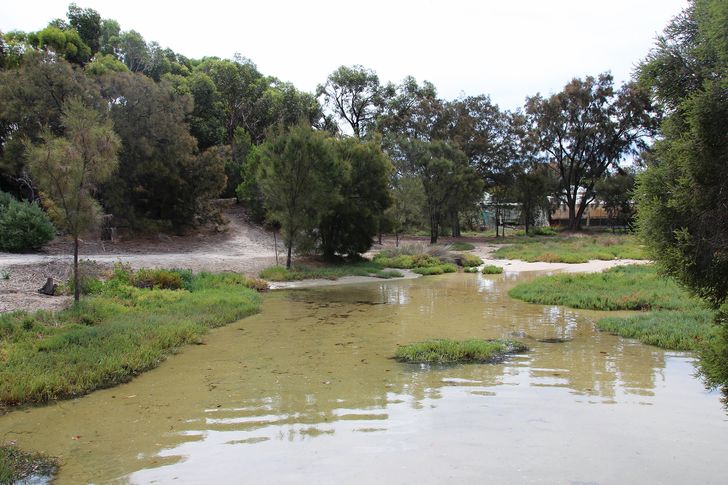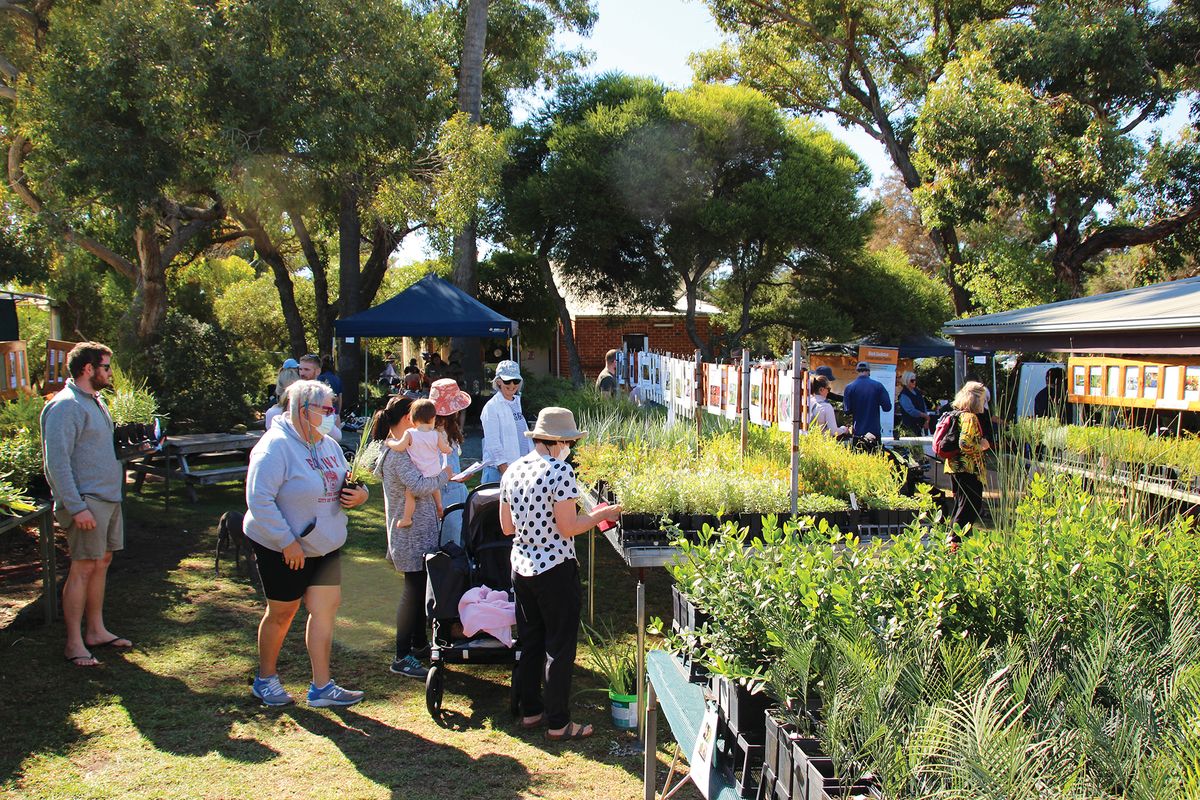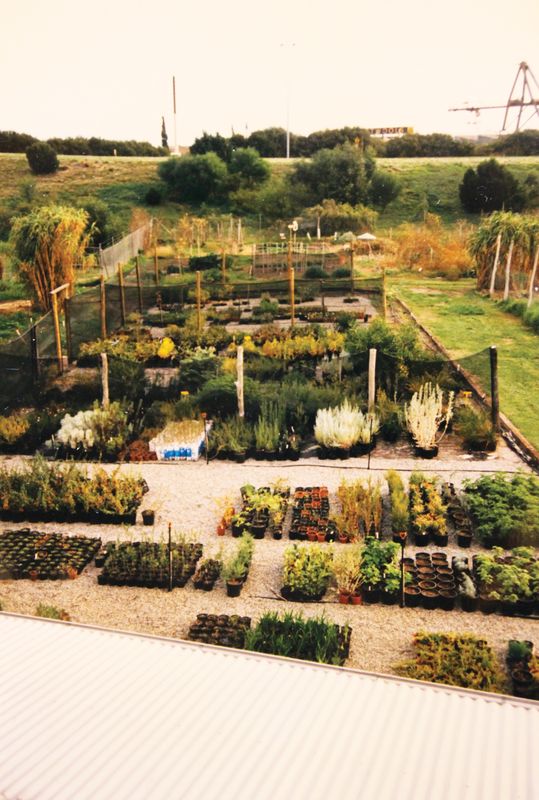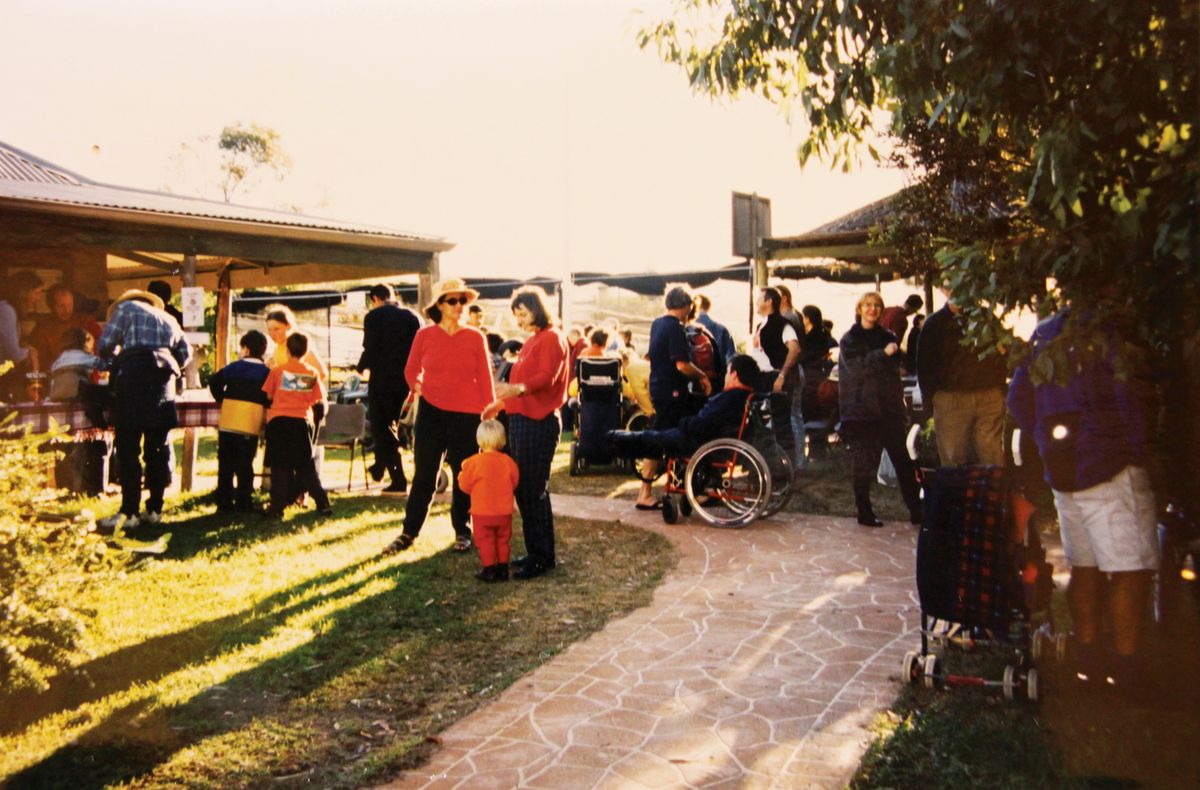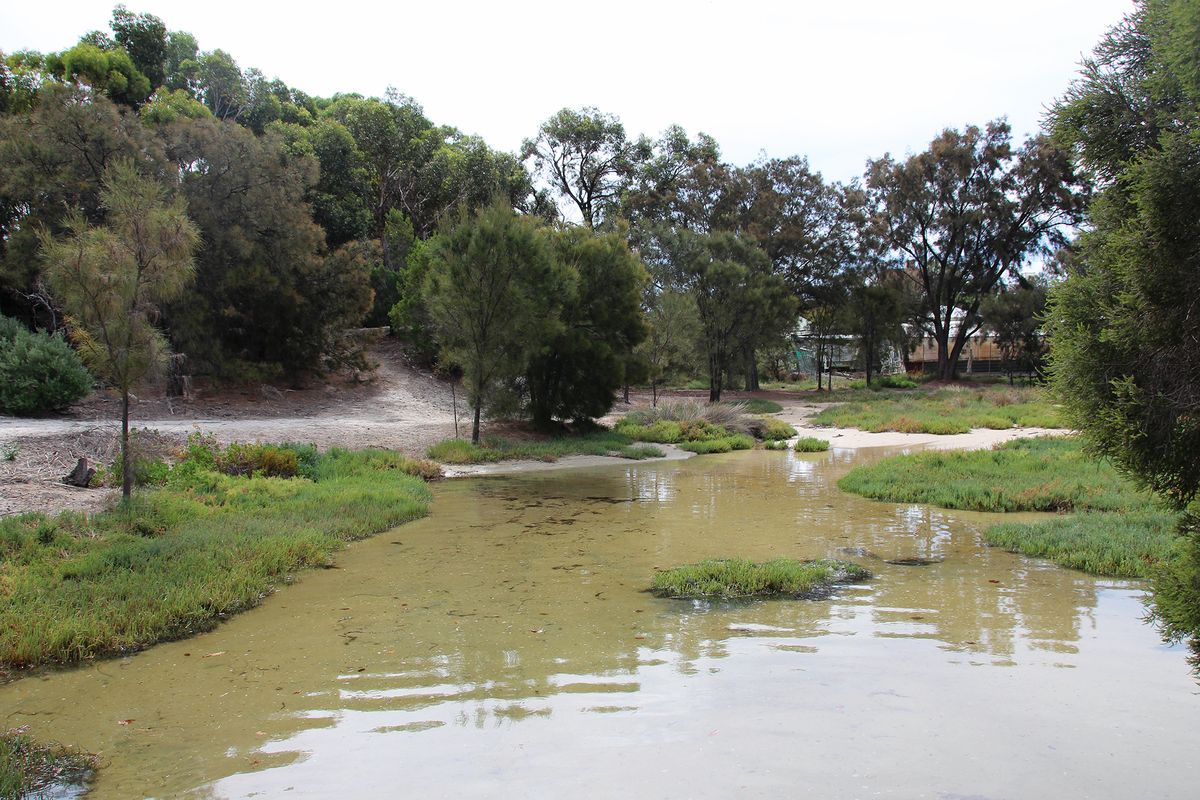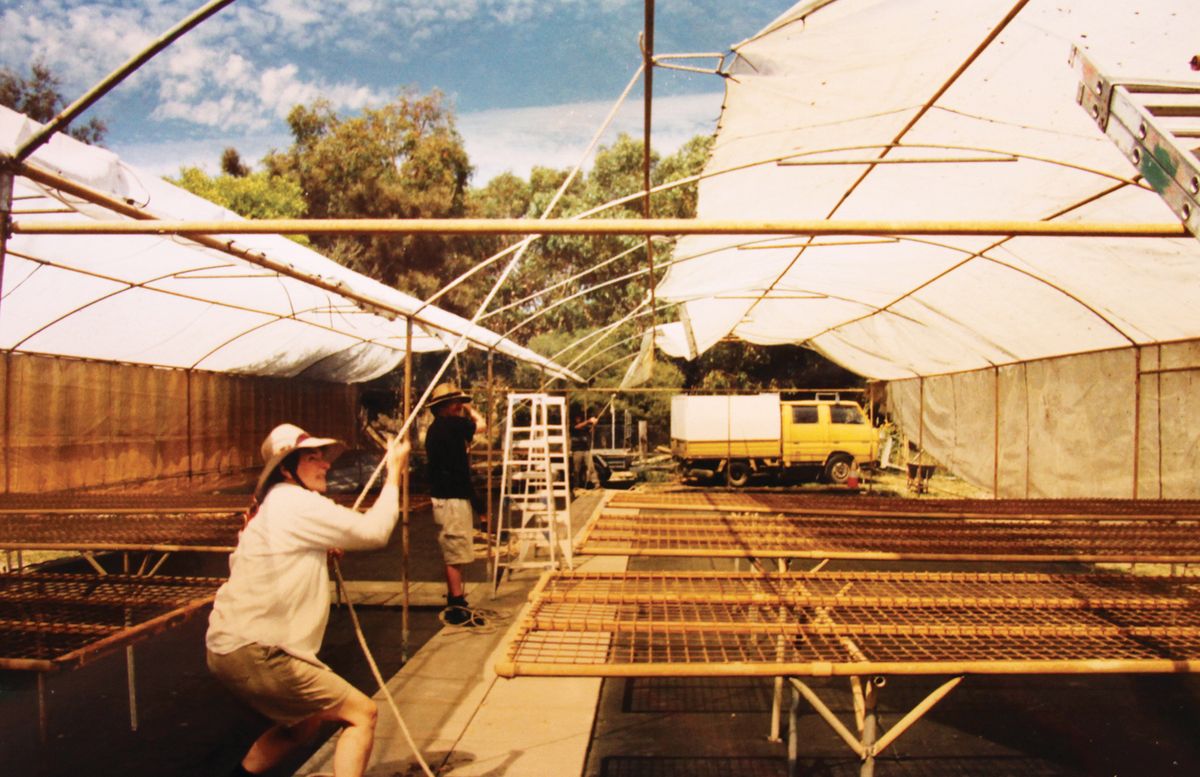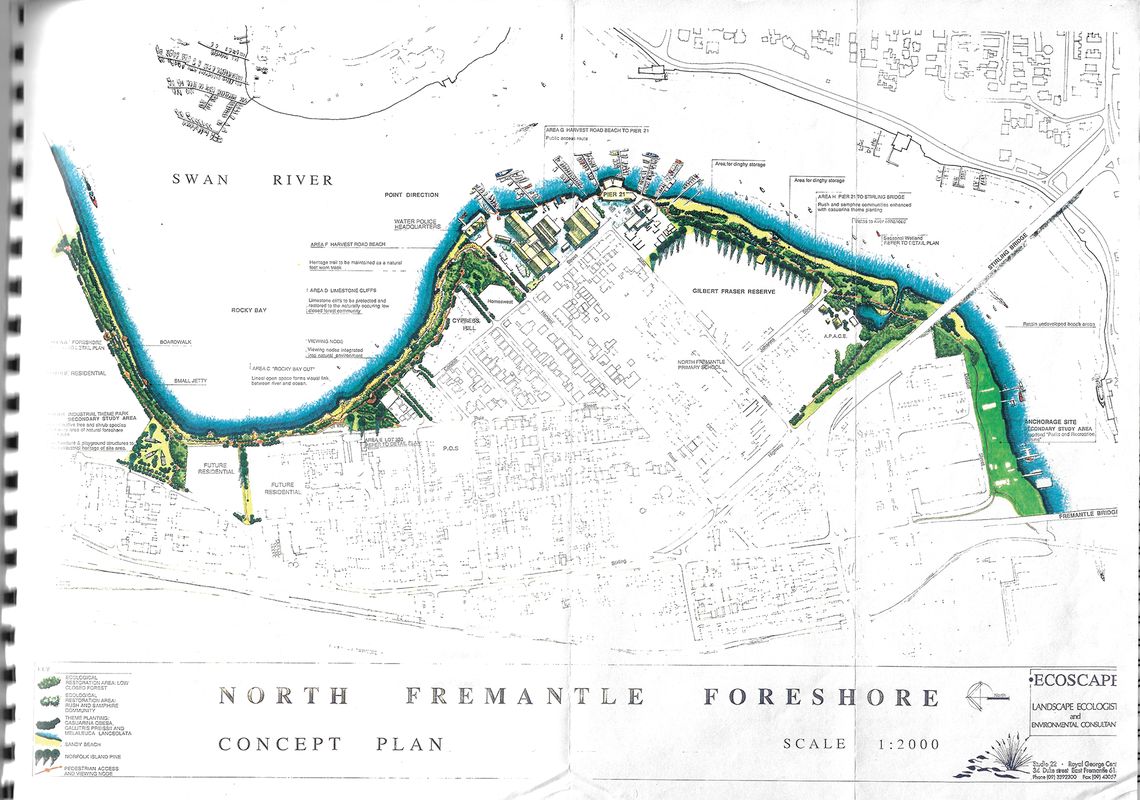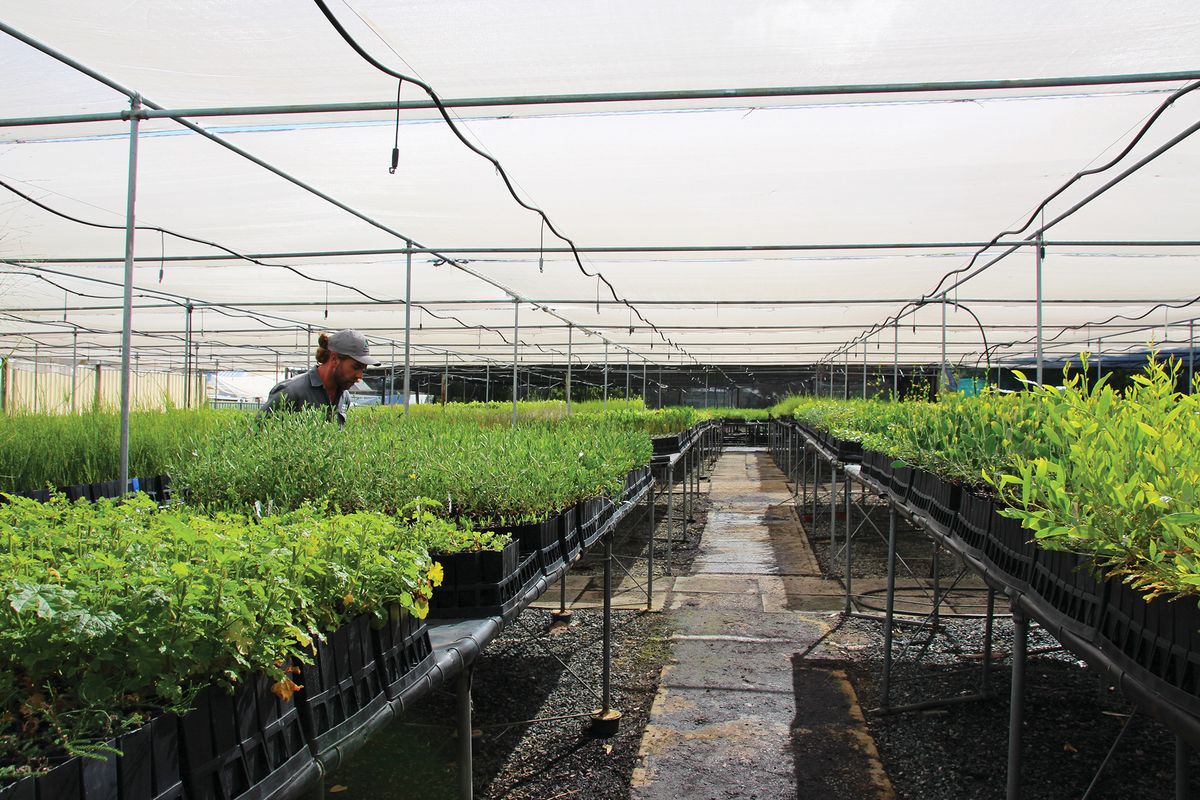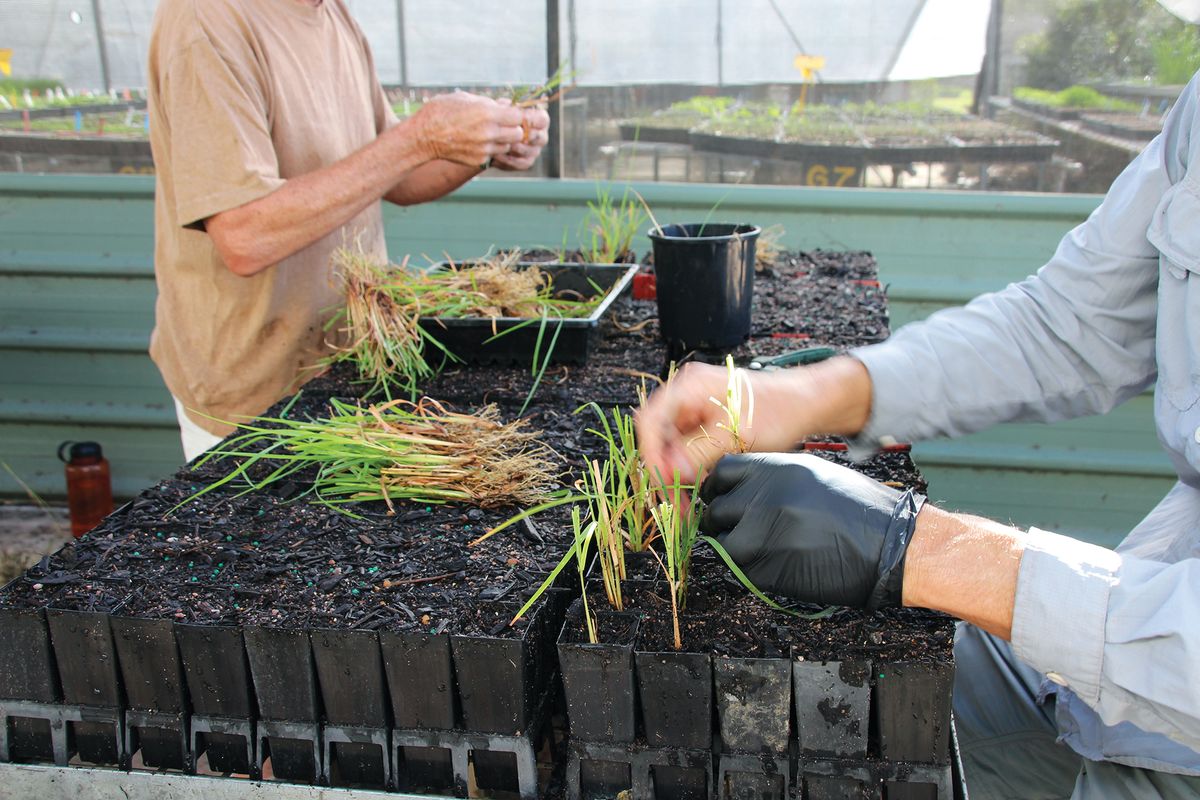The year was 1982. The town of North Fremantle was in the process of turning from an industrial port town into ’80s suburbia. A book by German-born British economist E. F. Schumacher questioning material wealth’s impact on human culture and happiness was gaining in popularity. In response, a group of academics from Murdoch University leased a five-acre property to demonstrate techniques for sustainable living and alternative technology along the Bilya (Swan River). A rammed earth building, solar panels, wind turbine and recycling centre were built on the property with the construction process framed as an educational course. The project, located on the land of the Whadjuk people of Noongar Country, was one of the first alternative energy sites in Western Australia and was named Appropriate Community and Education.
Known today as APACE, the project is interesting both from ecological and community perspectives. Evolving from its beginnings as a sustainable living demonstration, APACE today runs on the funds it makes as a not-for-profit organization. The organization now provides revegetation, landscaping and recycling services, an organic community garden, a seed collection and seed bank, environmental project management and education and training in regeneration. Its on-site retail and wholesale nursery sells seed stock endemic to the Swan Coastal Plain. Over the four decades since its inception, the project has expanded its role in the North Fremantle community from demonstration site to catalyst for ecological regeneration.
In 1988, the beginnings of the Garungup revegetation program resulted in the formation of a makeshift nursery at APACE which continues today.
Image: courtesy APACE
In 2001, the nursery at APACE was expanded using recycled and donated materials and the help of volunteers and nursery staff.
Image: courtesy APACE
In 1988, APACE received a Bicentennial Grant from the City of Fremantle to revegetate the polluted Garungup (Rocky Bay), a site sacred to the Whadjuk people.1 With the help of volunteers and community support, species endemic to the area were planted along the foreshore. This operation was the first in a series of initiatives that would, over the years, establish APACE as a key agent in the ecological regeneration of the North Fremantle area.
As grants dried up in the late 1990s, APACE’s nursery was expanded. APACE manager Jo Heta emphasizes that the nursery today is one of the only remaining nurseries in Perth that sows every one of their seeds without machinery. Harnessing people in the processes of production is what makes APACE’s approach unique – the nursery’s retail operations also bring together community. In the hands of some 300 volunteers per year, aged between 14 and 90 and of all abilities, APACE has, over four decades, become a focal point for the North Fremantle community, disseminating advice and developing programs that foreground the need for a reparative approach to the environment.
This approach can be seen in the way that APACE has developed its retail nursery. Perth’s current urbanization poses a significant threat to the unique endemic flora and fauna of Western Australia’s South West region, globally recognized as a biodiversity hotspot.
Within this area, the Swan Coastal Plain comprises a mosaic of vegetation complexes. Plants in the area have adapted to the sandy, nutrient-deprived dune soils and a climate that can mean months without rain. When buying a native plant from APACE, one is advised to choose a species that matches the vegetation complex of the anticipated planting site. This aims to minimize both disruption to existing ecosystems and the need for future maintenance.
Plants adapt to specific areas over long periods, making their genetic makeup different from the same species that has grown up in another location. Seeds collected to put back in these areas are known as provenance seed stock. By maintaining the genetic integrity of an area, we can produce more resilient native ecosystems that are better able to withstand unpredictable climatic events.
The retail and wholesale nursery staff propagate species endemic to the Swan Coastal Plain. Photo taken in 2022.
Image: Alice Ford
In an important divergence from commercial nurseries, APACE volunteers pot plants by hand. Photo taken in 2022.
Image: Alice Ford
APACE’s Swan Regional Seedbank contains seed stock that dates from as early as the 1980s, some from sites long since developed. Seeds are kept in temperature-controlled refrigeration units, catalogued according to the council area where the stock was collected. Some seeds that need fire to germinate are smoked in a small smoking shed using a smouldering camp oven. Currently, the organization is planting a seed orchard on the site for species, including grevillea and banksia, whose seeds are harder to collect.
Verges are often overlooked as pieces of landscape in our suburbs. Challenging this, APACE started the Native Verge Initiative Scheme in the late 1990s. Beginning with four councils, over 13 have been involved in the scheme over the past 15 years. During COVID-19, over 50,000 plants were provided to suburban residents from APACE using a click-and-collect system. Promoted by each council participating in the scheme, the idea aims to use endemic species from the allotted suburb to create interconnected verges, stitching together new street-length corridors for suburban wildlife. Volunteers and staff have also planted seeds all along the APACE boundary that connect the site’s official boundaries back towards the Bilya. Framed by eucalypts, casuarinas and melaleucas, the land hosts tawny frogmouth owls and bobtail lizards among other species that have now returned to the site. The planting on the property’s front verge continues this strategy of connection, stretching out from behind the front fences towards neighbouring gardens.
APACE’s revegetation of Garungup was one of the early catalysts that began the process of gradually reconnecting the then-fragmented North Fremantle Foreshore. In 1992, 10 years after APACE’s establishment and four years after the commencement of the Garungup project, City of Fremantle asked local environmental consultant and landscape architect Ecoscape to create a Foreshore Management Plan for a four-kilometre stretch along the Bilya. Led by Ecoscape founder David Kaesehagen, the plan included a proposal for a pedestrian path that would reconnect isolated fragments of foreshore vegetation from Fremantle Port to Mosman Park, and a concept for a saline wetland at Prawn Bay in front of APACE that referenced the area’s tidal history. Ecoscape collaborated with Whadjuk Noongar consultants and community members, hosting community engagement workshops in APACE’s rammed earth building to develop the proposal, the construction of which was funded by Australia Council’s Community Environmental Art Design (CEAD) program and City of Fremantle.
In 1992, environmental consultant and landscape architect Ecoscape was commissioned to prepare a management plan for the North Fremantle Foreshore.
Image: Ecoscape
At the request of the Whadjuk Noongar consultants, earth moved to form the new tidal channel was retained at the northern end of the site in the form of a mound, effectively keeping soil from the site adjacent to the newly formed bay. Remaining areas of higher ground connect two bridges to Ecoscape’s overall foreshore path design. Some 20 years later, beds of samphire, in addition to rushes, sedges and melaleucas now flourish around this inlet. I have even seen someone camping with their tent on one of the islands formed by the tide.
The Prawn Bay wetland adjacent to APACE in 2021. The wetland now floods and flourishes with samphire.
Image: Alice Ford
This tide, however, may not be in APACE’s favour. In 100 years, most of APACE and Fremantle’s southeast foreshore is predicted to be underwater due to a sea-level rise of 0.9 metres.2 APACE has already seen flooding events in wetter months, predicted as 1 in 10 and 1 in 100-year storm events by the Department of Water.3 In one Facebook video uploaded by the nursery, a volunteer kayaks up the main street to the nursery gates.
A flooding foreshore isn’t the only force against which the organization has been struggling. In 2001, the APACE community’s “Hands Off APACE” campaign rallied to save the site when developers attempted to purchase the nursery land. The project’s location near a regenerated foreshore has made the land attractive and economically viable for many investors. In addition, other machine-based enterprises in the private sector compete with APACE’s nursery.
Regeneration using endemic plants can provide flood protection, connect neighbouring sites, and create wildlife corridors through the provision of much-needed habitat. APACE’s strategy demonstrates how other community organizations and landowners along the Derbal Yerrigan might regenerate and adapt, following a philosophy of care that gives agency back to the landscape and embraces the dynamism of natural processes. As the tide begins to lap the edges of APACE, nursery staff continue to plant buffers of vegetation along Prawn Bay and the site’s boundary fence, rather than build walls. Flooding offers an opportunity for change and the chance to envision a new relationship with water where the landscape can take on a life of its own.
APACE is located on the land of the Whadjuk people of Noongar Country.
1. Debra Hughes-Hallet, Indigenous History of the Swan and Canning Rivers, Curtin University, Perth, 2010, p 25.
2. Charlie Bicknell, Sea Level Change in Western Australia, Department of Transport, Perth, 2010, p 18.
3. Government of Western Australia, Floodplain Mapping Tool, https://www.water.wa.gov.au/maps-and-data/maps/flood-maps (accessed 31 May 2022).
Source
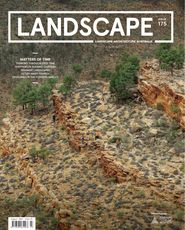
Review
Published online: 30 Sep 2022
Words:
Alice Ford
Images:
Alice Ford,
Ecoscape,
Photo taken in 1993, courtesy APACE,
courtesy APACE
Issue
Landscape Architecture Australia, August 2022

